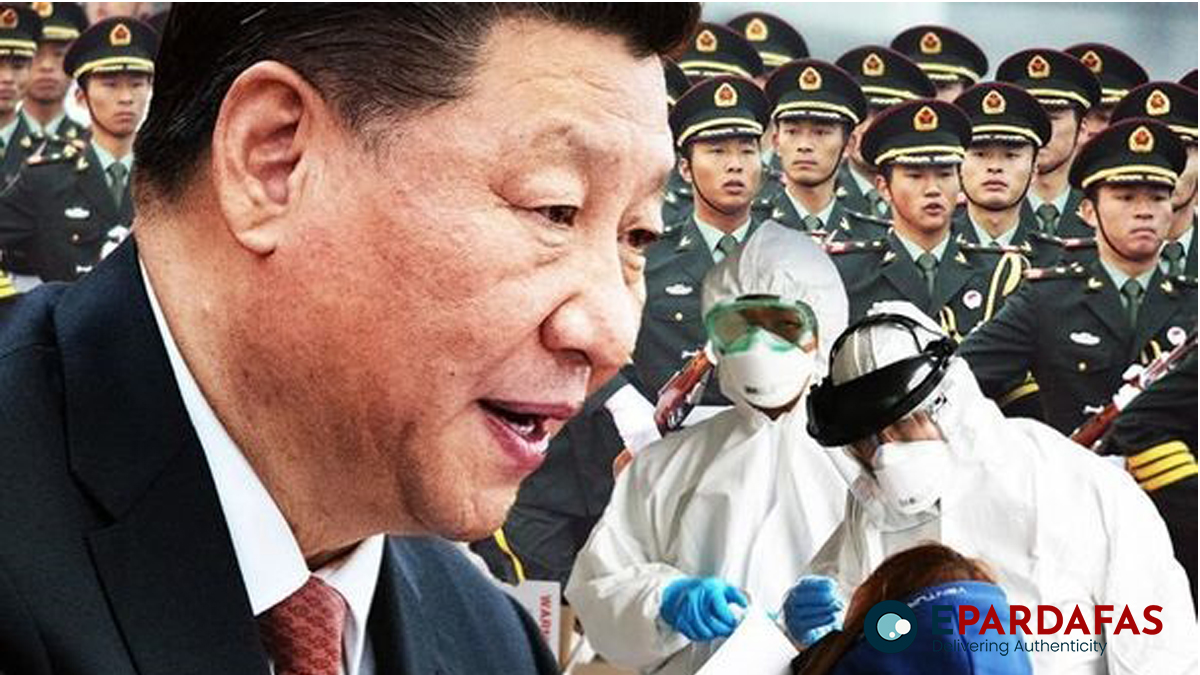
China Reports Surge in COVID-19 Infections as New Omicron Subvariants Spread, Raising Questions About Official Data

The Chinese Center for Disease Control and Prevention (CDC) recently reported a sharp increase in COVID-19 infections, with the rate of positive cases nearly doubling to 20% in the past few weeks. This surge is attributed to the spread of two new Omicron subvariants, JN.1 and XDV, across the country. However, while the infection rate mirrors global trends, the reported number of COVID-19-related deaths in China remains suspiciously low, raising concerns about the accuracy and transparency of the official data.
Rising Infections, Low Reported Deaths
According to an August 8 report from China’s CDC, the COVID-19 positive rate for influenza-like cases surged from 8.9% in early July to 18.7% by the month’s end. Despite this significant increase, China reported only 203 severe COVID-19 cases and two deaths for the entire month. The dominant strains were identified as the JN.1 and XDV Omicron variants, with the total number of cases reported nationwide at 7,042.
This trend in infection data aligns with the August 8 update from the U.S. Centers for Disease Control and Prevention (U.S. CDC), which noted a 17.6% increase in COVID-19 detections in the United States over the past six months. Similarly, Europe has seen a 20% rise in positive COVID-19 tests since the start of 2024. The World Health Organization (WHO) reported that the global COVID-19 test positivity rate has exceeded 10% and continues to climb.
However, the discrepancy between China’s reported deaths and those in other countries has sparked skepticism. The U.S. CDC recorded 1,920 COVID-related deaths in July alone, a stark contrast to China’s two reported deaths. Given China’s population of 1.4 billion compared to the U.S.’s 335 million, the official Chinese figures seem improbably low.
Questions About Data Transparency
China’s ruling Communist Party (CCP) has been repeatedly accused by the international community of downplaying and covering up the true extent of COVID-19 infections and deaths since the virus first emerged in Wuhan in late 2019. These concerns have only intensified as China’s official data continues to paint a less severe picture than what is being reported in other nations.
In December 2022, the CCP abruptly lifted its stringent COVID-19 restrictions, including widespread testing and reporting, leading to widespread skepticism about the true state of the pandemic in China. The lack of transparency has left many Chinese citizens questioning the reliability of the data they receive and feeling uncertain about the severity of the ongoing outbreak.
Spread of New Omicron Subvariants
The U.S. CDC has identified the KP.3.1.1 variant as the most common strain currently circulating in the United States, followed by several other subvariants of the JN.1 strain. While these subvariants have not been linked to more severe symptoms, they are noted for their ability to evade immunity from previous infections or vaccinations.
In China, the CDC reported that the XDV and JN.1 Omicron subvariants are responsible for the majority of recent COVID-19 cases, with XDV accounting for 38% to 43% of infections and JN.1 and its subvariants making up 55% to 60% of cases. Despite the rising infection rates, the U.S. CDC noted that the XDV.1 subvariant now accounts for just 0.3% of cases in the United States, a decline from previous months.
Dr. Dong Yuhong, an infectious disease specialist, warned that the new subvariants, particularly KP.3 and KP.2, have increased infectivity and a stronger ability to bypass immunity. She also cautioned that relying solely on vaccines may not be sufficient due to the virus’s rapid mutation, advocating for a more holistic approach to strengthening the immune system through healthy lifestyle choices.
Public Concerns and Reports of Youth Infections
Amid rising infections, there are growing concerns among the Chinese public, particularly regarding the impact of the new subvariants on young people. Chinese social media has been filled with posts from doctors and experts warning about severe cases in younger patients and the potential for more serious outbreaks. Reports of sudden deaths, including among the young, have further fueled fears.
Hu Yang, a leading respiratory physician in Shanghai, noted that some young patients have developed severe lung infections, a condition known as “white lung,” due to the XDV variant. Meanwhile, Feng Ge, an expert in traditional Chinese medicine, warned that children are particularly vulnerable to the new subvariants.
Sean Lin, a microbiologist and professor at Fei Tian College in New York, accused the Chinese government of concealing the true extent of COVID-19 deaths, particularly among the elderly and now increasingly among younger populations. He suggested that the widespread exhaustion of the immune systems in many young Chinese people might be contributing to the high infection rates.
A Call for Transparency and Trust
The ongoing COVID-19 outbreak in China, coupled with the government’s lack of transparency, has eroded public trust in official institutions. Many Chinese citizens are turning to social media and unofficial channels to share information and seek clarity about the true state of the pandemic in their country.
Lin and other experts have called on the Chinese people to seek solace in their spiritual traditions and strengthen their moral resolve in the face of the ongoing crisis. He emphasized the importance of maintaining faith and a kind heart as a means of surviving the hardships brought on by the pandemic.
As the situation in China continues to evolve, the global community remains watchful, urging the Chinese government to provide more accurate and transparent data to better understand the true impact of COVID-19 within its borders.
- Madhes Province Holds Vast Development Potential: Prime Minister Oli
- Man Arrested for Using Forged Document to Exploit Community Forest in Achham
- Health Minister Paudel Highlights Nepal’s Progress and Challenges at UN Health Commission Session
- Nidhi Calls on Party Cadres to Strengthen Nepali Congress Organization












Comments